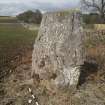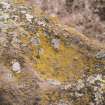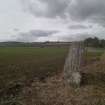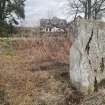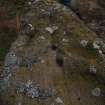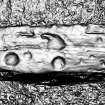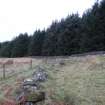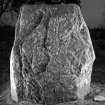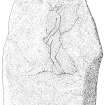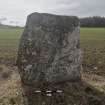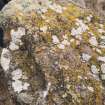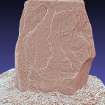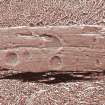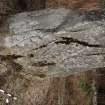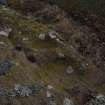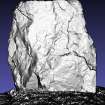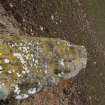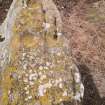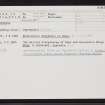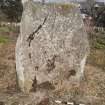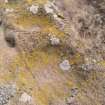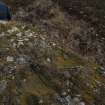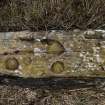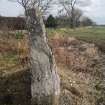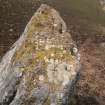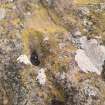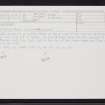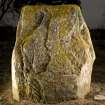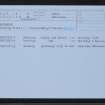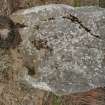Following the launch of trove.scot in February 2025 we are now planning the retiral of some of our webservices. Canmore will be switched off on 24th June 2025. Information about the closure can be found on the HES website: Retiral of HES web services | Historic Environment Scotland
Westerton
Carved Stone (Prehistoric) - (Early Medieval)(Possible), Natural Feature (Period Unassigned), Standing Stone (Prehistoric), Standing Stone (Prehistoric)
Site Name Westerton
Classification Carved Stone (Prehistoric) - (Early Medieval)(Possible), Natural Feature (Period Unassigned), Standing Stone (Prehistoric), Standing Stone (Prehistoric)
Canmore ID 34906
Site Number NO55SW 15
NGR NO 53645 52097
Datum OSGB36 - NGR
Permalink http://canmore.org.uk/site/34906
- Council Angus
- Parish Aberlemno
- Former Region Tayside
- Former District Angus
- Former County Angus
Westerton, Aberlemno, Angus, incised stone
Measurements: H 1.4m, W 1.00m
Stone type: sandstone
Place of discovery: NO 5364 5210
Present location: in situ in a field at Westerton.
Evidence for discovery: first recorded in the mid nineteenth century.
Present condition: weathered.
Description
This appears to be a prehistoric standing stone of dumpy proportions, for there are cupmarks on the top. Faint traces survive on its south-west face of an incised upright human figure, about 0.9m high.
Date range: possibly early medieval.
Primary references: Simpson 1868, 15; Fraser 2008, no 72.
Desk-based information compiled by A Ritchie 2018
Field Visit (March 1978)
Westerton NO 536 521 NO55SW 15
This stone stands in an arable field on the W side of the road at Westerton and measures 1.4m high and 1m broad. On its SW face there are the remains of an incised human figure about 0.9m high, and on the top of the stone there are five cup-marks.
RCAHMS 1978, visited March 1978.
(Simpson 1866, 15)
Note (4 May 2021)
Date Fieldwork Started: 04/05/2021
Compiled by: ELF
Location Notes: This sandstone stone, measuring 1.4m high and 1m broad, stands in an arable field on the W side of the road at Westerton. On the W face there are the remains of an incised human figure about 0.9, high, the shoulder, arm and leg and knee now the only remains due to exfoliation of the stone face. The figure is only visible on the 3D model and was not visible on location. On the top of the stone there are a number of depressions and grooves. The depressions which have been previously described as cupmarks but are natural features. At the base of one of the 'cupmarks' is a small rock inclusion which could not have been carved around by pecking to produce a cup-mark.






































